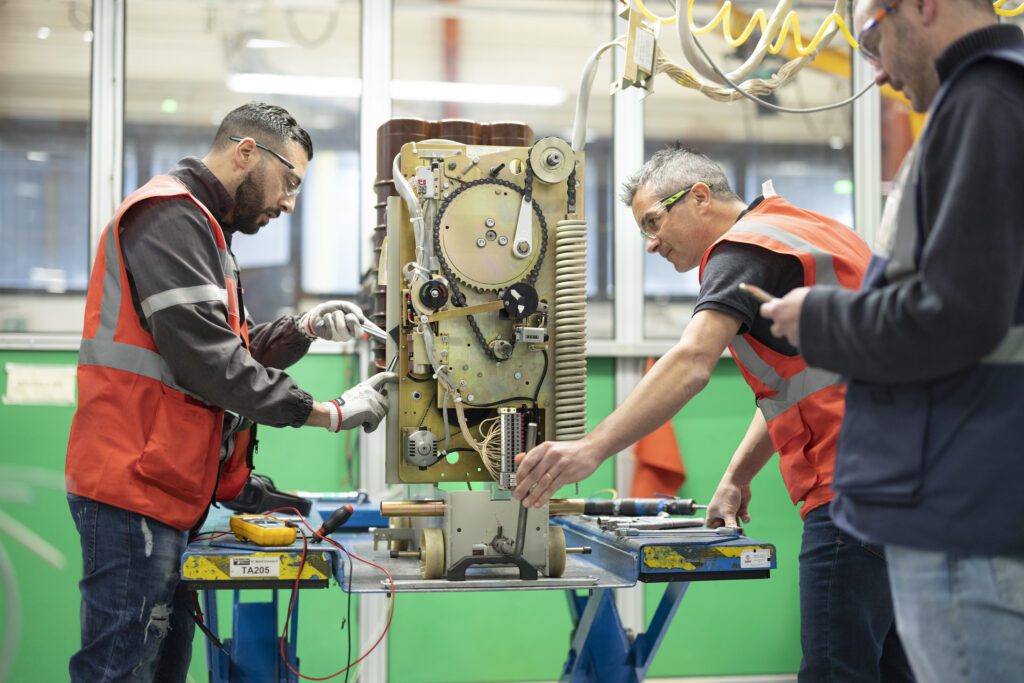The growing awareness to address climate change hazards sparks rethinking of the industrial sector’s traditional manufacturing and purchasing habits. What was once linear – buy, use, dispose of, replace – is more circular – buy, use, repair/upgrade, recycle.

Today’s issues of skyrocketing energy prices and uncertain supply chains help make the business case for the circular economy even more compelling.
Schneider Electric sees circularity – and the related concept of repairability – as critical to our customers’ business futures and our own. That’s why we’re working to:
- Create new product and service offerings to help our customers maximize the performance of their current installed base today and extend its lifespan going forward.
- Help customers digitize their equipment to meet today’s connectivity requirements and offer recycling services to help close the circle when a product has truly reached the end of its useful life.
Four drivers of circularity
Industrial technologies have advanced rapidly over the last two decades. Still, several factors are forcing owners and operators to rethink how to bring their facilities up to today’s new standards beyond wholesale equipment replacement, including:
- Climate concerns. Circularity can be an important lever to meet climate and sustainability targets. According to the Ellen MacArthur Foundation, taking a circular path could cut the European Union’s carbon emissions in half by 2030 across mobility, food systems, and the built environment.
- Customer priorities. Consumers focus on sustainability in their buying decisions and companies that can prove their commitment to this principle benefit. An Accenture survey found 72% of respondents are already buying more environmentally friendly products than they were five years ago – and 81% said they expect to buy more over the next five years. And, getting to the heart of circularity, 83% said it is important for companies to design products meant to be reused or recycled.
- Compliance. Governmental authorities around the globe are raising environmental performance standards to emphasize circularity. In the European Union, for example, lawmakers are working through the particulars of the proposed Sustainable Products Initiative as part of a larger Circular Economy Action Plan. Among other provisions, the legislation would establish performance requirements, including repairability and recyclability.
- Rising costs. Today’s inflationary pressures are driving up the cost of new electrical equipment in ways that could significantly impact bottom lines. A circular approach focusing on digitization upgrades over replacement can reduce both capital and operating expense budgets.
Schneider Electric’s circularity expertise
Schneider Electric is already working in the circular economy. We’ve partnered with customers to:
- Develop upgrade plans that replace outdated switchgear components with modern, digitized versions that could add decades of useful life to existing equipment.
- Recycle obsolete equipment to ensure the reuse of salvaged material.
- Ensure hazardous substances like sulfur hexafluoride (SF6) gas are recovered and, where appropriate, purified for use in other applications.
This is exactly the approach we’ve used with global steel manufacturing leader ArcelorMittal to digitize their electrical installations. Starting with an audit to assess the current conditions of medium-voltage equipment in Belval, Luxembourg, we worked with the company to recondition and digitize several switchgear and oil transformers. The effort:
- Saved 15% to 20% of the cost of replacing that equipment
- Prevented the need to reprocess 26 metric tons of material
- Avoided releasing 170 equivalent metric tons of CO2 emissions
Learn more
To learn more about Schneider Electric’s approach to the circular economy – and how we can make it work for your organization – visit our services page.
![[11:44 AM] Jacqueline GOH Electric Vehicle, eMobility, EV Charger, EVlink Pro AC, Singapore Green Plan 2030 [11:44 AM] Jacqueline GOH EcoStruxure™ Power, EcoStruxure™ Grid](https://blog.se.com/wp-content/uploads/2024/01/generic_homes_AdobeStock_377331555-300x200.jpeg)


